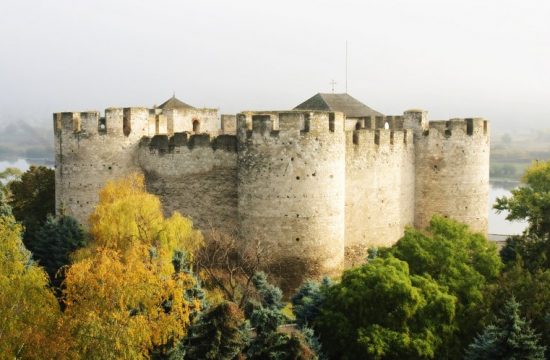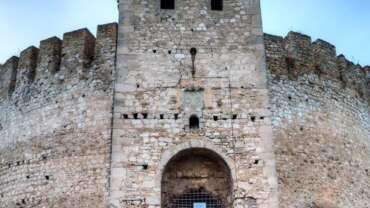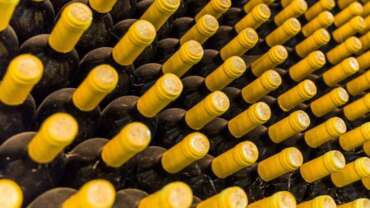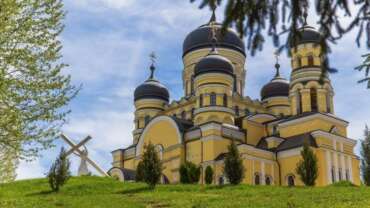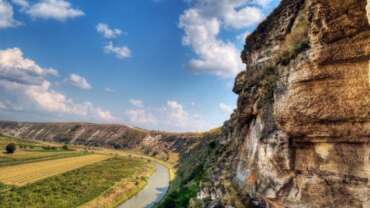Cities and Villages in Moldova
Moldova is divided into thirty-two districts (raioane, singular raion), three municipalities and two autonomous regions (Gagauzia and Transnistria). The final status of Transnistria is disputed, as the central government does not control that territory. The cities of Comrat and Tiraspol, the administrative seats of the two autonomous territories also have municipality status.
Moldova has 65 cities (towns), including the five with municipality status, and 917 communes. Some other 699 villages are too small to have a separate administration, and are administratively part of either cities (40 of them) or communes (659). This makes for a total of 1,681 localities of Moldova, all but two of which are inhabited.
Balti City
Bălţi (Romanian pronunciation: [ˈbəltsʲ]; Russian: ‘Бельцы’ [Bel’tsy] and Бэлць [Bėlts’]) is a city in Moldova. It is the second largest in terms of area and economic importance after Chişinău, and the third largest in terms of population after Chişinău and Tiraspol. The city is one of the five Moldovan municipalities. Sometimes also called “the northern capital”, it is a major industrial, cultural and commercial centre and transportation hub in the north of the country. It is situated 127 kilometres (79 mi) north of the capital Chişinău, and is located on the river Răut, a tributary of the Dniester, on a hilly landscape in the Bălţi steppe.
Geography of Soroca
Bălţi is situated on the tops and slopes of three hills and in two small valleys. The land in the north of Moldova is very fertile, mostly consisting of black earth or chernozem. Several extraction sites for raw materials used in the construction industry are also found in the vicinity of Bălţi. The creeks Răuţel, Copăceanca, and Flămândă cross the territory of the municipality, and flow into the river Răut. Also, several lakes are situated in Bălţi: City Lake, Komsolskoe Lake, Chirpicinoe Lake, Strâmba Lake.
The municipality covers an area of 78.0 square kilometres (30.1 sq mi), of which the city proper 41.42 square kilometres (15.99 sq mi), the village Elizaveta (an eastern suburb) 9.81 square kilometres (3.79 sq mi), and the village Sadovoe (a north-western suburb) 26.77 square kilometres (10.34 sq mi). Of these, an important portion (20.11 square kilometres (7.76 sq mi)) is agriculturally cultivated.
Chişinău City
Chişinău (Romanian pronunciation: [kiʃiˈnəw]), is the capital and largest municipality of Moldova. It is also its main industrial and commercial centre and is located in the middle of the country, on the river Bîc. According to January 2011 official estimates, Chişinău proper has a population of 664,700 and the municipality of Chişinău is home to 789,500 residents.
Chişinău is the most economically prosperous locality in Moldova, and its largest transportation hub. As the most economically and socially important municipality in Moldova, the city has a broad range of educational facilities.
History of Chisinau
Founded in 1436 as a monastery village, the city was part of the Principality of Moldavia, which, starting with the 16th century fell under the suzerainty of the Ottoman Empire. At the beginning of the 19th century it was a small town of 7,000 inhabitants. In 1812, in the aftermath of the Russo-Turkish War (1806–1812), the eastern part of Moldavia was ceded to Russian Empire and Chişinău became the capital of the newly annexed gubernia of Bessarabia. Its population had grown to 92,000 by 1862 and to 125,787 by 1900.
Architecture of Chisinau
The city’s growth plan was developed in the 19th century. Many buildings were designed and built in a beautiful architectural style, some remaining to this day. In 1836 the construction of the Cathedral and its belfry was finished. The belfry was demolished in Soviet times, but was rebuilt in 1997.
Modern architecture
Many modern-style buildings were built in the city since 1991. There are also a lot of office and shopping complexes that are modern, renovated or newly built; including Kentford, SkyTower, and Union Fenosa headquarters. However, the old Soviet-style clusters of living blocks are still an extensive feature of the cityscape.
Soroca City
Soroca (Russian: Сороки Soroki) is a Moldovan city situated on the Nistru (Dniester) river about 160 km north of Chişinău. It is the administrative center of Soroca District.
History
The city has its origin in the medieval Genoese trade post of Olchionia, or Alchona.[citation needed] It is known for its well-preserved stronghold, established by the Moldavian Prince Stephen the Great (Ştefan cel Mare in Romanian) in 1499. Its name is derived from the Slavic word for magpie.
The original wooden fort, which defended a ford over the Dniester/Nistru, was an important link in the chain of fortifications which comprised four forts (e.g. Akkerman and Khotin) on the Dniester, two forts on the Danube and three forts on the north border of medieval Moldova. Between 1543 and 1546 under the rule of Petru Rareş, the fortress was rebuilt in stone as a perfect circle with five bastions situated at equal distances.
During the Great Turkish War, John Sobieski’s forces successfully defended the fortress against the Ottomans. It was of vital military importance during the Pruth Campaign of Peter the Great in 1711. The stronghold was sacked by the Russians in the Russo-Turkish War (1735–1739). The Soroca fortress is an important attraction in Soroca, having preserved cultures and kept the old Soroca in the present day.
The locality was greatly extended in the 19th century, during a period of relative prosperity. Soroca became a regional center featuring large squares, modernized streets, hospitals, grammar schools and conventionalized churches. In the Soviet period the town became an important industrial center for northern Moldova.



